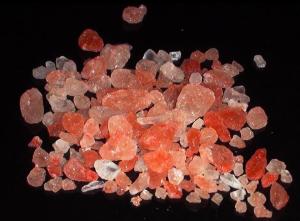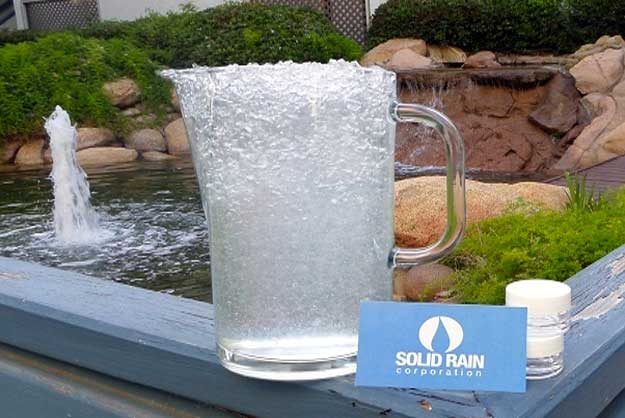
A greener fuel “less toxic than caffeine” could replace NASA’s dangerous hydrazine rocket propellant
For decades, NASA has relied on an efficient but highly toxic fuel known as hydrazine to power satellites and manned spacecraft. Now the agency is laying the groundwork to replace that propellant with a safer, cleaner alternative.
NASA’s Green Propellant Infusion Mission, or GPIM, has passed its first thruster pulsing test, a major milestone that paves the way for a planned test flight in 2015, agency officials said. NASA unveiled the rocket thruster success Tuesday (July 9) in Washington, D.C., during a briefing with aerospace industry officials and Colorado Sen. Mark Udall (D-CO).
The GPIM initiative aims to demonstrate that a green fuel with nearly 50 percent better performance than hydrazine could power Earth-circling satellites and eventually deep space missions.
Hydrazine has powered satellites and manned spacecraft for years, but it is highly flammable and corrosive, making it dangerous and expensive to transport. Since the fuel can be extremely harmful if it is inhaled or touches the skin, it is handled by workers wearing inflatable suits.
The new rocket fuel, dubbed AF-M315E, is far more benign; it is stored in glass jars and has been described as less toxic than caffeine.
The propellant is an energetic ionic liquid that evaporates more slowly and requires more heat to ignite than hydrazine, making it more stable and much less flammable.Its main ingredient is hydroxyl ammonium nitrate, and when it burns, it gives off nontoxic gasses like water vapor, hydrogen and carbon dioxide.
Importantly, M315E is safe enough to be loaded into a spacecraft before it goes to the launch pad, which would cut the time and cost of ground processing for a vehicle headed for space.
“In today’s world you cannot and do not want to load a spacecraft with hydrazine and ship it,” said Michael Gazarik, associate administrator for NASA’s Space Technology Mission Directorate (STMD).
Udall, a Democrat, said the new propellant will cause less harm to the environment, boost fuel efficiency and pave the way for more complex launches.
“I don’t know what there isn’t to like in there,” he told reporters Tuesday.
A company based in Udall’s home state, Ball Aerospace, has been working witha subcontractor Aerojet Rocketdyne and NASA scientists to develop a propulsion system that can handle the new environmentally friendly fuel. The project is getting support from NASA‘s Space Technology Mission Directorate, a new office charged with injecting money intovital technologies the space agency needs to fulfill its deep-space exploration goals.
The Latest Bing News on:
Green Rocket Fuel
- Sport and the climate emergency: collating injustice with an action planon May 5, 2024 at 11:00 pm
I’m very alarmed by everybody’s lack of alarm, that’s the scariest thing for me,’ says Warming up author Madeleine Orr ...
- The Rocket Fuel Behind China Shock 2.0: Weak Currency, Deflationon May 4, 2024 at 5:00 pm
China’s economy is teetering on the brink of widespread deflation—a scenario that could cause even more problems than high inflation. We look at Japan’s “lost decade” to explain why ...
- Paraffin-Powered Rocket Launch Boosts Australian Space Ambitionson May 3, 2024 at 1:43 am
German startup HyImpulse Technologies GmbH’s single-stage SR75 rocket, powered by a mixture of solid paraffin fuel and liquid oxygen, took off from the Koonibba Test Range in South Australia ...
- Crimean bridge blown up by solid rocket fuel in 2022on May 3, 2024 at 1:36 am
It was based on solid rocket fuel concealed in reels of polyethylene film. Source: Russian daily newspaper Kommersant, with reference to investigation materials Details: A Russian investigation found ...
- John Green Was Dubious a 'Turtles All the Way Down' Movie Could Work, Then He Met Hannah Markson May 2, 2024 at 9:00 am
The book, released in 2017 after Green's rocket to fame following books (and adaptations) "The Fault in Our Stars" and "Paper Towns," follows a character named Aza (Isabella Merced) who struggles with ...
- Could rocket fuel soon be produced in Polk County?on April 30, 2024 at 6:08 pm
(WFLA) — Rocket fuel, made in Polk County ... Ron DeSantis signed a Memorandum of Understanding with Space Florida, Ocean Green Hydrogen Corporation, a Tampa-based company, and LowCarbon Hydrogen ...
- Orbex secures an additional £16.7M funding to ramp up development of its bio-fuel rocketon April 30, 2024 at 5:11 am
Orbex, a spaceflight company, has received £16.7 million from six backers in an update to its Series C funding round.
- Best Beer: Rocket Fuel, at Rocky River Brewing Companyon April 23, 2024 at 6:23 pm
Deep amber in color, with subtle hints of spice, Rocket Fuel is brewed with a blend of Belgian yeasts, double malt, and more hops than LeBron at tip-off, yielding a flavor so rich, it may require ...
- Space industry hopes eclipse excitement will be rocket fuel for the $500 billion space economyon April 11, 2024 at 5:00 pm
“You don’t have to be a rocket scientist to be in the space industry,” Heather Pringle, retired Air Force major general and chief executive of the nonprofit Space Foundation, told Yahoo News.
- Powell Provides Rocket Fuel For Marketson March 24, 2024 at 3:51 am
Opinions expressed by Forbes Contributors are their own. I write about investing, markets and Berkshire Hathaway. Stocks and bonds rose sharply for the week as Federal Reserve Chair Powell ...
The Latest Google Headlines on:
Green Rocket Fuel
[google_news title=”” keyword=”Green Rocket Fuel” num_posts=”10″ blurb_length=”0″ show_thumb=”left”]
The Latest Bing News on:
Rocket propellant
- China launches 4 satellites on 1st flight of new Long March 6C rocket (video)on May 9, 2024 at 7:18 am
Related: China to debut new Long March rockets in 2024 The Long March 6C uses a kerosene-derived fuel known as RP-1 and liquid oxygen propellant, making it more environmentally-friendly than previous ...
- Startup Claims Discovery of New Force for Propellant-Free Thrusterson May 8, 2024 at 4:40 am
A groundbreaking announcement has emerged from Exodus Propulsion Technologies, a space startup, where a former NASA engineer and his team have declared the discovery of a new force of nature that ...
- North Korea tested rocket engine last month: Reporton May 8, 2024 at 12:23 am
North Korea late last month carried out a test of a liquid propellant rocket engine, a US think tank claimed in its latest report. Pyongyang conducted an unannounced test during the fourth week of ...
- Starliner launch delayed to mid-Mayon May 7, 2024 at 7:39 pm
The first crewed flight of Boeing’s CST-100 Starliner will be delayed at least another week and a half to replace a faulty rocket valve.
- N. Korea tested rocket engine in late April, US think tank sayson May 7, 2024 at 6:50 pm
North Korea is believed to have conducted a test of a liquid propellant rocket engine in late April, a U.S. think tank said base ...
- Starliner launch delayed to at least May 17 to replace suspect valve in Atlas 5 rocketon May 7, 2024 at 5:40 pm
United Launch Alliance decided to replace a suspect valve in the Atlas 5 rocket's upper stage, delaying launch to late next week.
- Magellan Aerospace Signs Agreement With Peraton to Support NASA Sounding Rocket Programon May 7, 2024 at 2:00 pm
Magellan Aerospace Corporation ("Magellan") announced today that it would provide Black Brant vehicles and hardware to Peraton in support of the NASA Sounding Rocket Program. Under the terms of the ...
- What Actually Happened to the Boeing Rocket Last Night?on May 7, 2024 at 12:31 pm
NASA, Boeing, and United Launch Alliance called off Starliner's first astronaut flight when a rocket valve was acting strangely.
- First crewed launch of Boeing Starliner rescheduled to later this weekon May 7, 2024 at 9:14 am
Following the last-minute scrub of the first crewed test flight of the Boeing Starliner, NASA will make another launch attempt on May 10 at the earliest.
- Launch Roundup: Boeing Starliner delayed and China launches...on May 6, 2024 at 8:35 pm
Using the familiar mix of liquid oxygen and kerosene rocket propellants on both stages, the launcher has a payload capacity of 4,500 kilograms to low-Earth orbit (LEO) and 2,000 kilograms to a ...
The Latest Google Headlines on:
Rocket propellant
[google_news title=”” keyword=”rocket propellant” num_posts=”10″ blurb_length=”0″ show_thumb=”left”]











